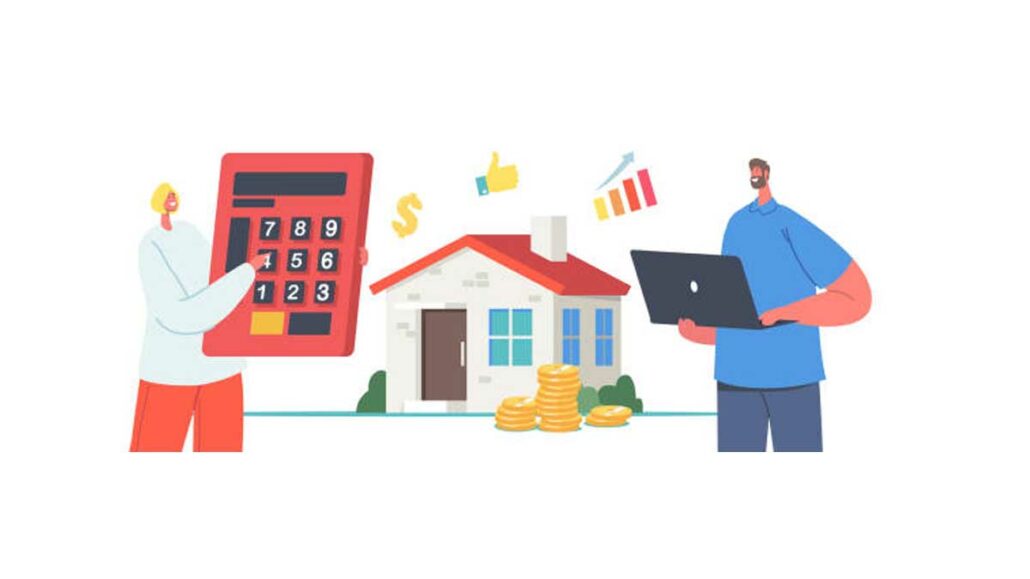For many, getting a mortgage is synonymous with paperwork — and lots of it. Chief among those documents? Tax returns. But what if you don’t have them or can’t provide them for some reason? Welcome to the world of mortgage without tax returns, a lifeline for self-employed individuals, freelancers, retirees, or even foreign nationals who may not have traditional income documentation.

This type of loan, often referred to as a “no-doc” or “low-doc” mortgage, allows borrowers to secure financing by proving their income through alternative means. While it may sound unconventional, it’s not rare. With the gig economy thriving and traditional employment models shifting, lenders have had to evolve — and so have their requirements.
But don’t get it twisted — the process isn’t easier. If anything, it’s more meticulous, and lenders scrutinize everything. So, if you’re ready to explore how to get a mortgage without tax returns, let’s break it down.
Why Lenders Ask for Tax Returns
Lenders rely on tax returns as a snapshot of your financial life. They help verify your income, evaluate your debt-to-income (DTI) ratio, and ensure that you’re capable of repaying the loan. Tax returns also show consistency — they tell lenders you’ve had steady income over time.
But here’s the kicker: not everyone files traditional tax returns, and some who do might have deductions that make their income appear lower than it really is. That’s especially true for self-employed people who write off significant business expenses.
When You Might Not Have Tax Returns
There are many scenarios where borrowers don’t have or can’t use their tax returns:
- Self-employed individuals who legally reduce taxable income through deductions.
- New business owners without two years of returns.
- Foreign nationals or expats with no U.S. tax history.
- People returning to the workforce after a career break.
- Retirees living off savings or investments.
- Investors whose income comes from rental properties or dividends.
In such cases, applying for a mortgage without tax returns becomes not just a choice — but a necessity.
Who Qualifies for a Mortgage Without Tax Returns?
Eligibility often hinges on your ability to prove income through other means. While traditional borrowers show W-2s and tax returns, non-traditional borrowers can use:
- Bank statements showing consistent deposits.
- Asset verification proving sufficient reserves.
- CPA letters confirming income stability.
- Rental income reports for property investors.
Most lenders offering no-tax-return mortgages look for high credit scores, low DTI ratios, and a sizable down payment — often 20% or more. You’re more likely to qualify if you have substantial bank reserves and a solid credit history.
Types of No-Tax-Return Mortgages
Now that you know it’s possible, let’s get into the different types of mortgages available when tax returns aren’t in play:
- Bank Statement Loans
- Stated Income Loans
- Asset-Based Loans
- DSCR Loans
- No-Income Verification Loans
Each has its own criteria and risk profile, but all share one commonality: they provide flexibility for non-traditional borrowers.
What Are Bank Statement Loans?
These loans allow you to qualify based on your personal or business bank statements — usually from the past 12 to 24 months. Lenders assess deposit consistency to estimate your monthly income. It’s an ideal option for small business owners or freelancers who can’t show traditional pay stubs or W-2s.
With this type of mortgage, the lender might use 50% of your total deposits as your qualifying income (or more if you’re not deducting business expenses aggressively).
Stated Income Mortgages Explained
Remember the days before the 2008 housing crash? Stated income loans were notorious — and risky. But modern versions have returned with more checks and balances. Now, lenders verify other aspects of your profile, such as bank statements, credit history, or assets.
You’re essentially telling the lender your income, and instead of verifying it with tax returns, they evaluate your ability to pay based on alternative documentation.
How Asset-Based Mortgages Work
If you don’t have active income but hold substantial assets, this loan may work for you. Lenders use your net worth — retirement accounts, investments, savings — to calculate how long your assets can sustain loan payments.
This option is great for retirees or high-net-worth individuals who live off investments rather than a paycheck.
DSCR Loans for Real Estate Investors
Debt Service Coverage Ratio (DSCR) loans are for real estate investors who generate rental income. Here, the lender doesn’t focus on your personal income but rather whether the property can generate enough cash flow to cover the mortgage.
If the rental income from your investment property exceeds the mortgage payment (often 1.25x the monthly payment), you’re likely eligible.
Private Lenders vs Traditional Lenders
Traditional banks typically shy away from no-tax-return loans due to federal regulations. But private lenders, non-QM lenders, and portfolio lenders specialize in these products.
Private lenders offer flexibility, but that comes at a cost — often higher interest rates and stricter repayment terms.
Pros and Cons of No-Tax-Return Mortgages
Like everything in the financial world, mortgages without tax returns come with their fair share of advantages and trade-offs.
Pros:
- Flexibility for self-employed borrowers and non-traditional earners.
- Quicker approvals in some cases due to streamlined documentation.
- Access to homeownership for those otherwise locked out by traditional lending standards.
Cons:
- Higher interest rates due to increased risk.
- Larger down payment requirements (typically 20-30%).
- More limited lender options, especially among big-name banks.
Understanding these factors helps set realistic expectations, especially when shopping around for the best deal.
Minimum Credit Score Requirements
Your credit score is crucial, especially when your income isn’t verified in the usual way. While traditional loans may accept scores as low as 620, most no-tax-return mortgage options require a minimum credit score of 680 or higher.
A better credit score means:
- Lower interest rates
- Greater loan flexibility
- Increased lender confidence
Always check your credit report before applying and dispute any errors to give yourself the best shot at approval.
Down Payment Expectations
Be prepared: no-doc and low-doc loans often require down payments of 20-30%. This protects the lender since your income isn’t being traditionally verified.
Some private lenders may accept as low as 10% with other strong compensating factors (like a high DSCR or stellar credit), but that’s the exception, not the norm.
If you’re short on cash, consider using gift funds or partnering with a co-borrower.
How to Prove Income Without Tax Returns
Even if you don’t have tax returns, lenders still need to see evidence of income or financial strength. Here’s what they might accept:
- 12–24 months of bank statements (personal or business)
- CPA or accountant letters
- Profit and Loss (P&L) statements
- Asset documentation (401(k), stocks, crypto holdings)
- Rental income history
The goal is to give the lender confidence that you can repay the loan without relying on traditional income docs.
Can You Use a CPA Letter for Mortgage Approval?
Absolutely. In fact, many lenders offering mortgage without tax returns require a CPA letter to verify income stability.
A CPA letter typically includes:
- Business name and structure
- Length of self-employment
- Estimated annual income
- Assurance that the information is accurate to the CPA’s knowledge
This letter doesn’t replace bank statements but complements them.
The Role of Profit and Loss Statements
A P&L statement gives lenders insight into your business income and expenses. If you’re self-employed or own a business, providing a year-to-date P&L alongside bank statements can significantly boost your application.
Make sure:
- It’s accurate and updated
- It’s prepared by a licensed CPA or accountant
- It matches the deposits seen in your bank statements
What If You’re Paid in Cash?
Getting paid in cash can make things tricky. Lenders will want to see a clear pattern of deposits. If you’re depositing your cash earnings into a bank account consistently, this can serve as a form of income verification.
Pro tips:
- Deposit cash regularly and avoid large one-time deposits.
- Keep a record of invoices or receipts.
- Consider documenting your business processes for transparency.
Are You a Freelancer or Gig Worker?
If you’re part of the gig economy, you’re not alone. Freelancers, Uber drivers, and other gig workers can qualify for a mortgage without tax returns through:
- Bank statement loans
- 1099 income verification
- Gig-platform payment histories
- Apps like Uber and Upwork often provide downloadable income reports — use these to your advantage.
Buying a House With No Proof of Income
If you don’t have W-2s, pay stubs, or even consistent bank deposits, it’s not impossible — but much harder.
Options include:
- Having a co-signer
- Offering a larger down payment
- Showing significant assets
- Providing alternative income verification (like rental history)
The key is demonstrating financial responsibility and payment capability through non-traditional means.
Mortgage Options for Foreign Nationals
If you’re a non-U.S. citizen without U.S. tax returns, there’s still hope. Many lenders offer ITIN mortgages or foreign national loan programs that don’t require a social security number or tax history.
Instead, they might ask for:
- Passport and visa
- International bank statements
- Proof of overseas income
- U.S. property rental agreements (if applicable)
Using Rental Income to Qualify for a Mortgage
For real estate investors, rental income is a valuable qualification tool. Through DSCR loans, lenders evaluate whether the income from the rental covers the mortgage (usually by 125%).
These loans are especially useful for:
- Multi-family property investors
- Short-term rental hosts (Airbnb, Vrbo)
- Buy-and-hold investors
Tips to Improve Approval Chances
Getting approved for a mortgage without tax returns can be tricky — but not impossible. Here are a few solid strategies to boost your chances:
- Maintain a strong credit score — 700+ is ideal.
- Keep low debt-to-income ratios (DTI under 43%).
- Provide 12–24 months of clean, consistent bank statements.
- Show steady cash flow, even if it’s from multiple income sources.
- Document your income sources thoroughly, including side hustles, rental properties, or freelance gigs.
Also, be transparent. Lenders can usually work with you if they understand your situation clearly.
Do You Need a Co-Signer?
A co-signer can definitely strengthen your mortgage application — especially if:
- You have a thin credit profile.
- Your income is inconsistent or hard to verify.
- You’re self-employed without long-term financials.
A co-signer adds their income and creditworthiness to the loan, reducing the perceived risk for lenders. But remember, they’re on the hook if you default.
What Are Non-QM Loans?
Non-Qualified Mortgages (Non-QM) are loans that don’t meet the strict guidelines of conventional loans (like Fannie Mae or Freddie Mac). They’re designed for:
- Self-employed individuals
- Real estate investors
- Retirees
- Foreign nationals
While they carry higher interest rates, Non-QM loans offer unmatched flexibility for those who can’t provide tax returns but can demonstrate income in alternative ways.
Documents You Can Use Instead of Tax Returns
If you’re applying for a mortgage without tax returns, have these documents ready:
- Bank statements (12–24 months)
- Profit and loss (P&L) statement
- CPA letter
- Lease agreements (for rental income)
- Investment account statements
- Social Security or pension documents (for retirees)
Having multiple forms of verification increases your credibility and speeds up approval.
Risks of Getting a Mortgage Without Tax Returns
While this mortgage option offers flexibility, it’s not without its risks:
- Higher interest rates and costs
- Limited lender options
- Risk of overextending financially if your income fluctuates
- More scrutiny on cash flow and reserves
Evaluate whether the benefits outweigh the costs based on your unique financial situation.
How Interest Rates Differ Without Tax Returns
Because you’re not offering standard proof of income, lenders see these loans as riskier. That risk is offset by:
- Higher interest rates (often 1–2% more than traditional loans)
- Larger down payment requirements
- Loan-to-value (LTV) restrictions
Shopping around for rates is crucial. Consider using a mortgage broker who specializes in no-doc loans or non-QM lending.
Can You Refinance Without Tax Returns?
Yes! If you currently have a mortgage and want to refinance — maybe to lower your rate or pull cash out — you can do so with:
- Bank statement refinance loans
- Asset depletion refinance
- DSCR-based refinancing (for investors)
Just like purchase loans, these alternatives rely on income other than tax returns.
Common Mistakes to Avoid
Don’t let these pitfalls derail your mortgage application:
- Submitting incomplete or inconsistent bank statements
- Not disclosing all debts or obligations
- Using temporary or one-time deposits as income
- Failing to explain income gaps
- Working with lenders unfamiliar with no-tax-return loans
Get organized before you apply, and always ask lenders what documentation they’ll need.
Best Lenders Offering No-Tax-Return Mortgages
Some of the top lenders specializing in mortgage without tax returns include:
- Angel Oak Mortgage
- New American Funding
- Citadel Servicing
- Griffin Funding
- Acra Lending
These institutions offer flexible mortgage solutions for the self-employed, investors, and borrowers with unique financial profiles.
Frequently Asked Questions (FAQ)
Are “no-doc” mortgages the same as they were before the 2008 crisis?
No. Today’s no-income verification mortgages require substantial documentation, just not traditional tax returns. The truly “no-doc” loans of the past, where income was simply stated without verification, are largely gone due to stricter regulations.
Can I get a mortgage with bad credit and no tax returns?
It is highly unlikely. While non-QM loans offer more flexibility in income verification, they typically require good to excellent credit scores to offset the perceived risk.
Is a larger down payment always required for mortgages without tax returns?
Generally, yes. A larger down payment reduces the lender’s risk and is a common requirement for these types of loans.
Will the lender look at my credit history?
Absolutely. Credit history is a critical factor in the approval process for all types of mortgages, including those without traditional income verification.
What are the interest rates like for mortgages without tax returns?
Interest rates are typically higher than those for traditional qualified mortgages due to the increased risk for the lender.
Are these loans only for the self-employed?
No. While they are often beneficial for self-employed individuals, others with non-traditional income streams or substantial assets may also qualify.
How do lenders calculate income using bank statements?
Lenders typically average the monthly deposits over a period of 12 to 24 months. They may also analyze the consistency and sources of the deposits.
Can I refinance my existing mortgage into a no-income verification loan?
Yes, refinance options exist under non-QM programs, including bank statement refinance and DSCR refinance for investment properties.
Are there government-backed mortgages without tax returns?
Generally, government-backed loans (FHA, VA, USDA) have specific income verification requirements that usually include tax returns. Mortgages without tax returns are typically non-QM loans offered by private lenders.
Should I consult a financial advisor before considering a mortgage without tax returns?
It is always advisable to speak with a qualified financial advisor to understand the implications and risks of any mortgage product, especially non-traditional ones.
Final Thoughts on Mortgage Without Tax Returns
Securing a mortgage without tax returns isn’t just possible — it’s increasingly common. With the rise of the gig economy, self-employment, and global mobility, lenders are adapting to a new borrower landscape.
While the process might require more documentation and slightly higher costs, the doors to homeownership are wide open — even if your financial picture isn’t painted in traditional W-2s and IRS forms.

